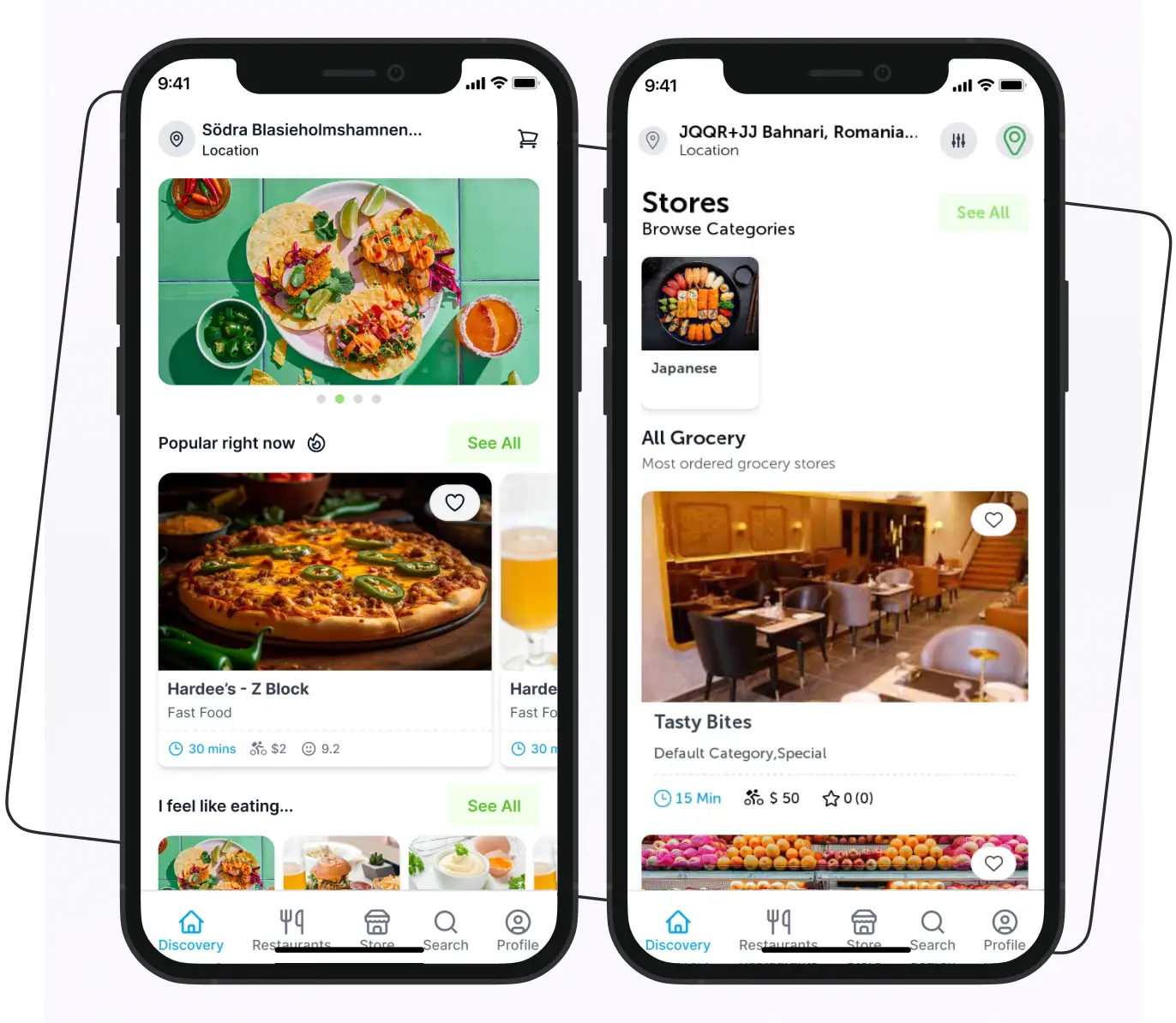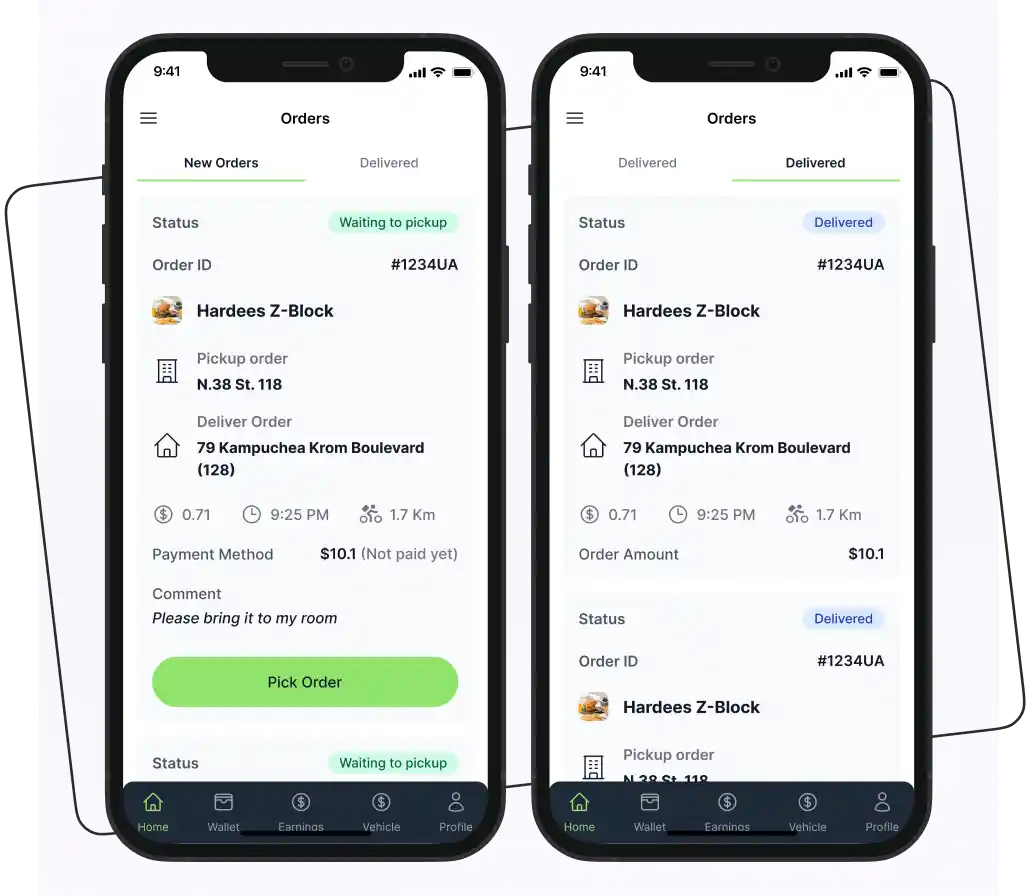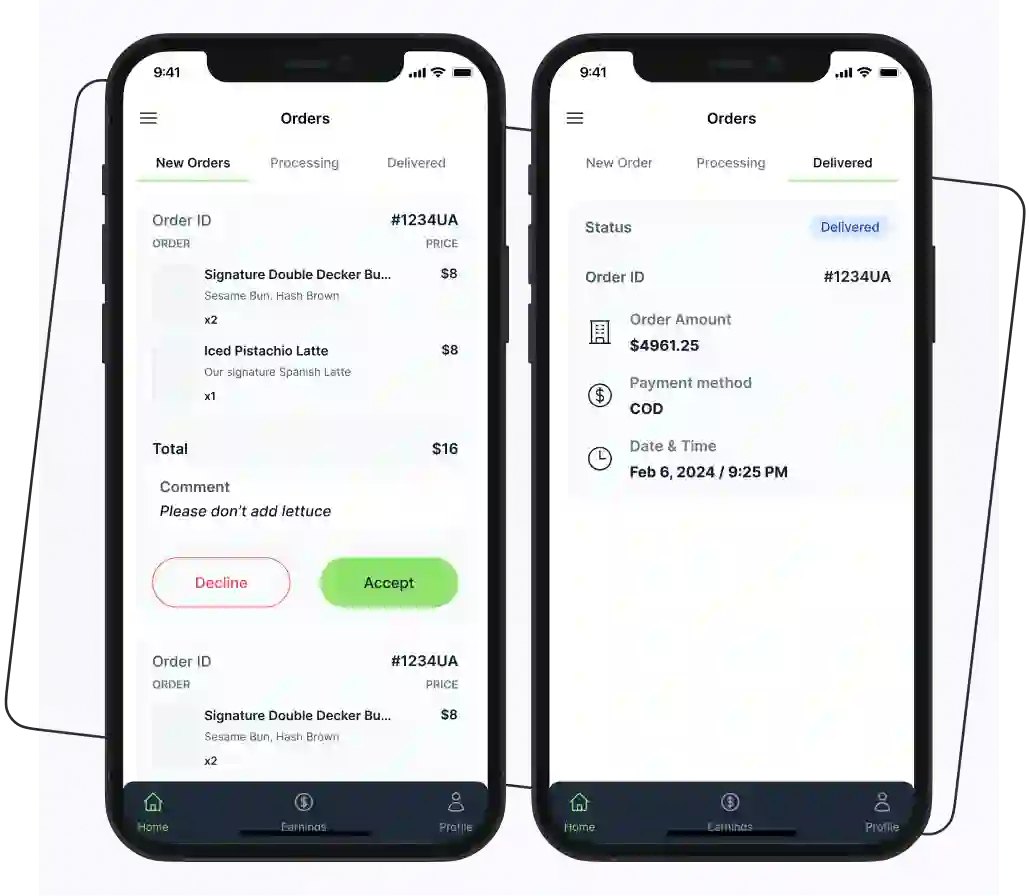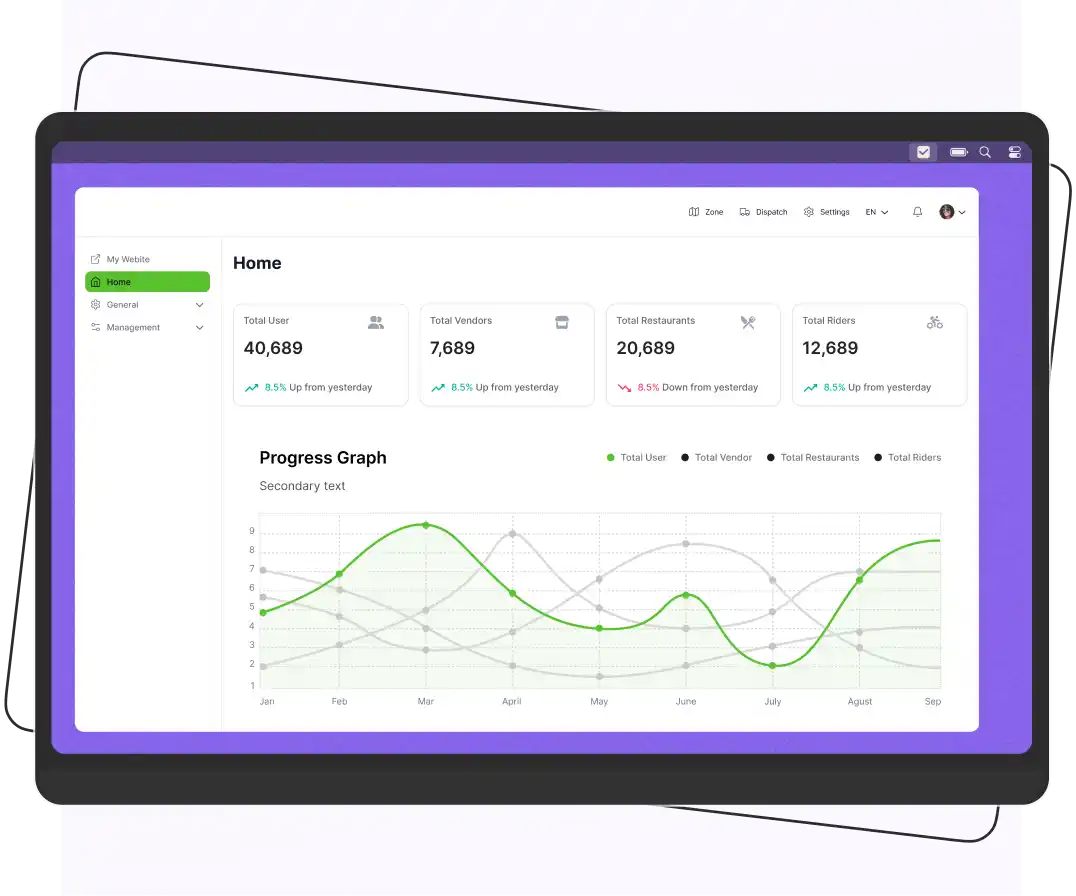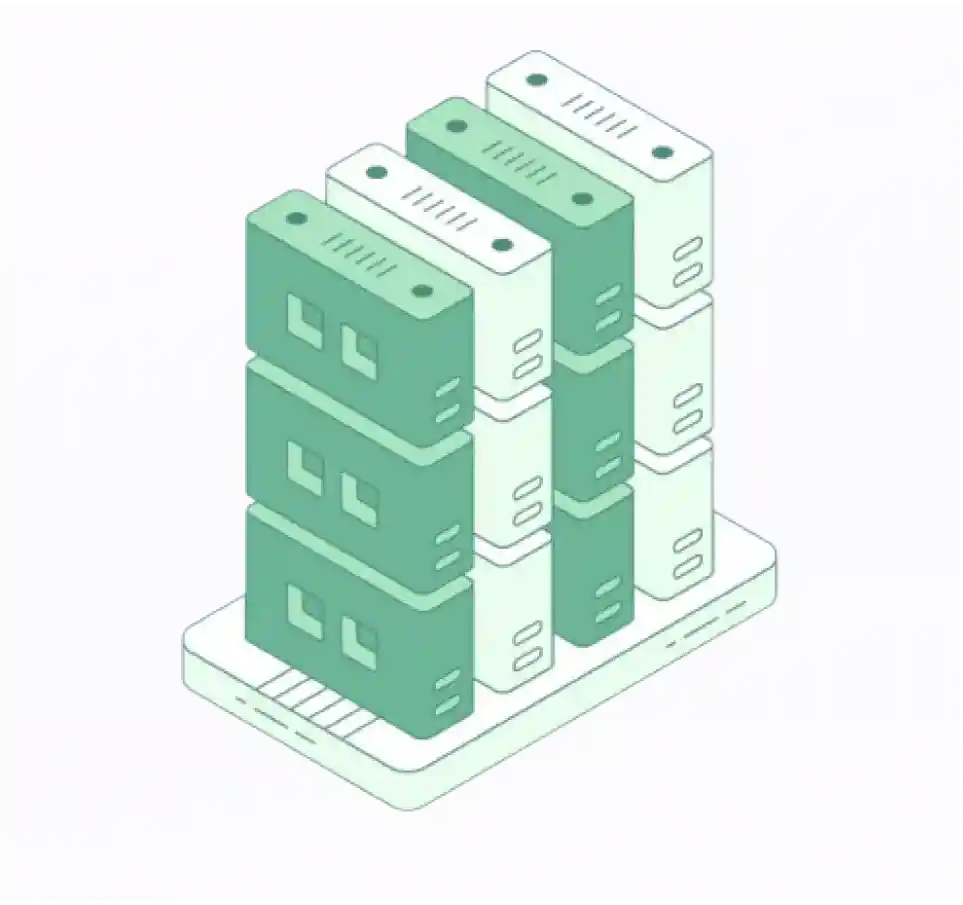
Starting a food delivery business can be a profitable venture, especially as the market is projected to reach $1.85 trillion in revenue by 2029. However, before entering into this growing industry, it’s important to understand the costs involved.
From initial setup expenses to operational overhead, the financial costs can vary significantly, with estimates ranging from $30,000 to over $150,000.
In this blog, we’ll break down the various costs associated with launching a food delivery service, helping you make informed decisions and prepare for a successful start.
So, let’s explore and get a clearer picture of the investment needed to start your food delivery business.
Cost to Start a Food Delivery Business
Look at the table below and know the exact cost of starting a food delivery business.
| Cost Category | Estimated Cost ($) |
| Business Registration | $100 – $500 |
| Website Development | $500 – $5,000 |
| Mobile App Development | $5,000 – $50,000 |
| Marketing and Advertising | $1,000 – $10,000 |
| Delivery Vehicles | $10,000 – $30,000 |
| Insurance | $500 – $2,000 |
| Equipment and Supplies | $1,000 – $5,000 |
| Staffing | $2,000 – $20,000 |
| Miscellaneous | $500 – $2,000 |
| Total Estimated Cost | $21,600 – $124,500 |
Cost to Start a Food Delivery Business by Region
Below are the estimated costs of starting a food delivery business according to different regions.
| Region | Estimated Start-Up Costs (USD) |
| North America | $10,000 – $50,000 |
| Europe | $30,000 – $100,000 |
| Asia | $10,000 – $80,000 |
| Australia | $10,000 – $150,000 |
| Africa | $3,000 – $90,000 |
| South America | $4,000 – $100,000 |
Factors Affecting the Cost to Start a Food Delivery Business
The cost to start a food delivery business depends on several factors, such as:

| Factors | Description |
| Business Model | Whether you choose to operate as a standalone delivery service, partner with local restaurants, or create a marketplace for multiple vendors. |
| Licensing and Permits | Costs associated with obtaining necessary licenses, permits, and health inspections required to operate legally. |
| Technology Infrastructure | Expenses for developing or purchasing a website and mobile app, as well as ongoing maintenance and updates. |
| Delivery Equipment | Investment in vehicles (bikes, scooters, or cars), delivery bags, and any other necessary equipment. |
| Marketing and Branding | Costs for creating a brand identity, promotional materials, and advertising to attract customers. |
| Staffing | Salaries or wages for delivery drivers, customer service representatives, and any administrative staff. |
| Insurance | Coverage options for liability, vehicle insurance, and other necessary protections. |
| Operational Costs | Day-to-day expenses, including fuel, maintenance, packaging supplies, and food costs if applicable. |
| Location | The impact of your business’s geographic location on costs, including rent for office space if needed. |
| Technology Integration | Costs for integrating payment systems, GPS tracking, and order management systems. |
Food Delivery Business Cost: Based on Popular Food Businesses
The food delivery business has several types:
- Restaurant-to-consumer delivery
- Platform to consumer delivery
- Other food delivery business models
- Grocery delivery
- Cloud kitchens
- Meal kit delivery
- Catering delivery
Each type of food delivery business has unique costs, influenced by factors like technology needs, inventory requirements, and marketing strategies.
Here are the estimated costs of different food businesses.
Restaurant-to-Consumer Delivery
- Startup Costs
- Equipment (kitchen appliances, delivery bags, etc.): $5,000 – $20,000
- Marketing (online ads, local promotions): $2,000 – $10,000
- Licensing and permits: $500 – $2,000
- Initial inventory (food supplies): $1,000 – $5,000
- Delivery logistics (vehicles, insurance): $10,000 – $50,000
Platform-to-Consumer Delivery
- Startup Costs
- Technology development (app/website): $10,000 – $100,000
- Marketing: $5,000 – $50,000
- Partnership agreements with restaurants: Variable
- Customer support infrastructure: $2,000 – $10,000
Grocery Delivery
- Startup Costs
- Delivery vehicles: $5,000 – $30,000
- Inventory (groceries): $2,000 – $10,000
- Technology (app/website): $5,000 – $50,000
- Marketing: $2,000 – $20,000
Cloud Kitchens
- Startup Costs
- Kitchen space rental: $2,000 – $10,000/month
- Equipment: $10,000 – $50,000
- Initial inventory: $1,000 – $5,000
- Marketing: $2,000 – $15,000
Meal Kit Delivery
- Startup Costs
- Recipe development: $1,000 – $5,000
- Packaging materials: $2,000 – $10,000
- Technology: $5,000 – $30,000
- Marketing: $3,000 – $20,000
Catering Delivery
- Startup Costs
- Equipment (catering supplies, transport): $5,000 – $20,000
- Initial inventory: $2,000 – $10,000
- Marketing: $2,000 – $15,000
- Licensing: $500 – $2,000
How to Start a Food Delivery Business?
Starting a food delivery business involves some steps, such as:

1. Conduct Research
In this phase, it’s essential to conduct thorough research to gain a solid understanding of the market. This knowledge is vital for effectively serving your customers.
You can divide this phase into several key steps:
- Identify Your Niche: Determine your focus area, whether it’s baked goods, meal prep services, or something else.
- Analyze Competitors: Examine your competitors to identify their strengths and weaknesses.
- Stay Informed on Market Trends: Keep up with the latest trends that could impact your business.
- Understand Your Target Audience: Decide whether you will cater to individual customers or corporate clients.
- Focus on Your Service Area: Clearly define the geographical area in which you will operate.
Once you gather all this information, you can easily create a business plan. Your plan should include:
- Marketing strategies
- Financial projections
- Business model
- Menu development
- Kitchen setup
- Operational processes
2. Decide your Business Structure
In this phase, you’ll need to determine the structure of your business. Consider whether you want to offer ready-made meals or meal prep kits. Are you interested in traditional restaurant delivery, grocery delivery, operating a cloud kitchen, or providing catering services? Your choice will influence your business strategy and overall approach.
3. Obtain Necessary Licenses
To ensure your food business is compliant and protected, start by registering your business and obtaining the necessary permits and licenses. Failing to do this correctly can result in fines, legal complications, and even the potential closure of your business.
Requirements can vary based on your location, so it’s important to consult your local government agencies for specific guidelines. Additionally, most states require a seller’s permit to collect sales tax on your food delivery sales.
Lastly, without a formal license or permit, securing insurance is vital. Consider obtaining auto insurance, property insurance, and general liability insurance to safeguard yourself against accidents or injuries related to your business operations.
4. Build Your Brand
Every business requires a strong online presence, whether through a website or social media. This is the face of your brand, so it’s essential to make it stand out.
Here are some tips to help you build a great website.
- Select a name that reflects your offerings and attracts your target audience.
- Take the time to design a cohesive brand identity, including colors, fonts, and overall style that aligns with your vision.
- Your website should be visually engaging, easy to navigate, and optimized for showcasing your products effectively.
- Invest in high-quality photography and visual assets to showcase the food offerings and improve the brand’s aesthetic appeal on the website/app.
5. Find Reliable Suppliers
It is the main step in starting a food delivery business. Research the reliable vendors who can provide high-quality ingredients consistently and build relationships with them.
Moreover, pay attention to packaging options. Choose packaging that not only looks attractive but is also functional and compliant with food safety standards.
6. Set up Logistics
The quality of your delivery operations is as important as the quality of the food. Food that arrives late, cold, or spoiled can lower customer satisfaction, and a business may fail to take off. Establish an efficient logistics plan that includes:
- Delivery Routes: Optimize routes to ensure timely deliveries.
- Delivery Staff: Hire reliable drivers who understand food handling protocols.
- Tracking System: Implement a system for tracking orders in real-time to keep customers informed.
7. Set Pricing Strategy
Determine a pricing model that covers your costs while remaining competitive. Consider factors such as:
- Cost of Ingredients: Calculate the total cost of meals, including preparation and packaging.
- Market Research: Analyze competitors’ pricing and adjust your strategy accordingly.
- Promotions and Discounts: Plan for introductory offers to attract new customers.
8. Marketing and Promotion
Create a marketing strategy that effectively reaches your target audience. Build a user-friendly website and active social media profiles.
Use local ads, flyers, and community events to promote your services. Collaborate with local businesses or influencers to expand your reach.
9. Launching
Prepare for a successful launch by ensuring everything is in place:
- Soft Launch: Consider a soft launch where you launch your business to a limited audience. Gather feedback and make necessary adjustments.
- Feedback Mechanism: Set up a system to collect customer feedback for continuous improvement.
- Grand Opening: Plan a successful grand opening event with special promotions to attract initial customers.
How Long Does It Take to Start a Food Delivery Business?
Check the table below and understand the estimated time that is required to start a food delivery business.
| Stages | Timeline |
| Planning and research | 1-3 months |
| Platform development | 2-6 months |
| Launch and marketing | Ongoing |
Ways to Reduce Initial Costs of Starting a Food Delivery Business
The following are the tips to help you reduce the cost of starting a food delivery business.
- Pick a niche that is in demand locally and matches your skills and resources.
- Think about renting a shared kitchen or commissary space to save on startup costs.
- Invest in high-quality, energy-efficient equipment to minimize ongoing operational costs.
- Think about combining your insurance policies to possibly lower your total costs.
- Build a relationship with suppliers that provide high-quality, eco-friendly packaging materials that improve your brand image.
- You can cut costs by assigning deliveries based on the specific driver and vehicle.
Build a Food Delivery Solution with Enatega
If you’re looking to level up your food delivery business, we can help you. With Enatega, you can grow your restaurant business and earn more profit. We have experts who build the best food-ordering apps that meet your requirements.
Instead of investing in in-house development or hiring a separate agency, Enatega offers a complete package that includes app development, customization, and ongoing support.
So, contact us today and get the best white-label food delivery platform.
FAQs
1. Do I need a business license for a delivery service?
Yes, you need a business license to operate a delivery service. However, the specific requirements depend on your location and the type of goods you deliver.
2. How to start a grocery delivery service?
Below are some steps to help you start a grocery delivery service.
- Do research
- Select the business model
- Create a business plan
- Obtain the necessary license
- Manage inventory and logistics
- Build a website
- Market your business
3. How much does it cost to make a food delivery system?
The cost to make a food delivery system ranges between $5,000 to $100,000 or more, depending on the complexity, features, and development approach.
Conclusion
Starting a food delivery business is a great way to get revenue, but it requires careful planning and execution. Now that you have a clear understanding of the costs involved, it’s time to take the next step.
If you're considering developing an app to increase the visibility of your food delivery service, look no further than Enatega. Our expert team specializes in creating innovative apps that can help you grow in the competitive food delivery market.
Don’t hesitate to book a free demo with us today and let our specialists guide you on your journey to success.








